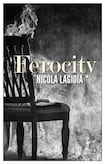
“Tawny owls traced long slanting lines through the air. Gliding, they waited to flap their wings...just inches from the ground so that insects, terrified by the sudden tempest... would rush out into the open, sealing their own fates.”
Merciless predators, vulnerable prey, and the sudden appearance of a young woman, “naked, ashen and covered in blood”, populate the opening pages of Nicola Lagioia’s fourth novel, Ferocity. Recently launched in Ireland, this is his first to be translated into English. It won the Strega, Italy’s premier literary prize, in 2015.
Impossible to pin down, Ferocity is part thriller, part crime novel, part forensic psychological examination of the dysfunctional Salvemini family at the centre of the narrative. It is a gripping tale of corruption, one that exposes the dark underbelly of Italian society, political double-dealing and the casual brutalisation of women.
Lagioia turns his ferocious gaze on Vittorio Salvemini, a self-made man, a builder, “developer” of brown-envelope projects that unleash ecological disaster on vast tracts of land around Bari, in southern Italy. There are startling images of flamingos falling out of the sky above poisoned land, of young men in their early thirties dying, 12-year-old girls becoming ill. “Tumours of the stomach, of the lungs. Healthy family men folded over at the waist and in the course of a few months were dead. Hollowed-out faces. Bald heads...a biblical plague.”
Salvemini has made his fortune very quickly. He enjoys flaunting his new-found wealth. He is married to Annamaria and they have four adult children. One of these, Clara, is the catalyst of the novel. It is she who appears naked and covered in blood in the opening pages. Her life, and her death, haunt the narrative – and the other characters – from the beginning, particularly through her relationship with Michele, her half-brother.
Michele is the product of their father Vittorio’s long-ago affair with a much younger woman. When Michele’s birth mother dies, Vittorio takes his baby son home to his wife. Annamaria accepts this new member of the family - or, more accurately, she is passive in the face of what she sees as an inevitability. In this, as in all her husband’s dealings, Annamaria is a complicit, silent observer .
As children, Michele and Clara develop a relationship of almost supernatural closeness. He is Heathcliff to her Catherine, and it is Michele’s devastating grief at his sister’s violent death that drives him to dig into the layers of family archaeology in order to expose its shameful secrets. “He misses his sister...in a stabbing, hallucinatory way. The sense of annihilation is so intense that certain afternoons he forgets what her face is like.”
Michele has, many years previously, distanced himself in every way from his family – from his father in particular – but now he returns to Bari, an avenging angel, bent on finding some imperfect justice for his dead sister.
Clara is an enigma, a disturbed and disturbing character, a shadowy but powerful absent presence in the novel. She is relentlessly promiscuous, unfaithful to her husband Alberto, who turns a blind eye to her betrayals.
I’d like to have known more about Clara’s motivations: about why she is drawn to become a punching-bag for the unspeakably awful men she sleeps with. Perhaps it is the numbness of despair. Clara seems desperate to connect with someone, anyone: to feel something other than hopelessness.
Women are routinely brutalised by men throughout the novel: psychologically as well as physically. They are frequently referred to as whores or sluts. Ruggiero, one of Vittorio’s sons, spits on a woman he has paid to have sex with. The contempt of these powerful men for women is equalled only by their contempt for the poor: “Poverty was disgusting,” Vittorio thinks, as he chooses his caviar at the delicatessen, “but nothing was more disgusting than the needy themselves.”
The saga of the Salvemini family is told in a way that demands the reader’s full attention. At times the narrative races along, breathless, frequently changing perspective, even within a single paragraph. At times, it’s not clear which “he” or “she” the author wishes us to know he’s referring to – that is, if you’re not paying attention. If you are, it feels like a gratifying trust in the reader. The translation from the original Italian, the work of Antony Shugaar, feels faultless throughout.
Lagioia is keen to emphasise that this is fiction: his tale is not inspired by any living person. The shadow of Berlusconi’s Italy, however, hovers around everything. At the launch of the novel in Bari, a scion of one of the region’s most powerful families asks Lagioia, with no small amount of pride, whether the novel is based on him and his family.
When the author demurs, the young man grins and says: "Nonetheless, you portrayed us well."
Catherine Dunne's latest work is The Years That Followed









